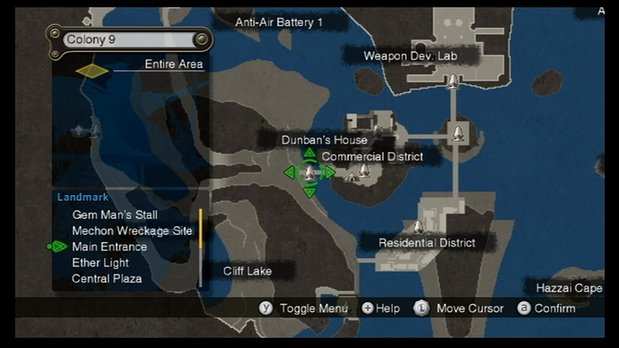Xenoblade Chronicles beginner's guide
Discover the subtleties of gem crafting, affinity, combat, and more with our detailed primer
Collectibles and the Collectopaedia
It doesn’t take long to discover your first collectible. They appear as flaming blue balls in nearly every area of the game. The locations of collectibles are static, but the actual content of each one is random - though the appearance rate for certain collectibles is higher in certain locations or during certain times, such as at night or during a rainstorm.
Collectibles aren’t automatically added to the Collectopaedia. Check after picking up a new collectible to see if any of the entries have changed from a dash to a blank space. If the entry is a blank space, you can select that space and register the collectible. Be aware, however, that the item will then disappear from your inventory, meaning if the item happens to be quest-related, you’ll have to find another.

Above: Seriously, where does Shulk put all this stuff?
Completing the Collectopaedia entries for a given area means valuable rewards, but only if you do so soon after discovering the area. For instance, if you wait until the end of the game to complete the Colony 9 entries, you’ll probably have little use for the pathetic Strength Up II gem that you may get as a reward.
Landmarks, Locations, and Exploration
Landmarks are special points found throughout your journey. They appear as icons on your map, and can be skip traveled to at your leisure. Once you’ve discovered one, you can instantly warp to it by selecting it on the map. Should you die, you’ll respawn at the landmark you last visited.
Locations encompass broader areas. They’re marked by text on your map, and, like landmarks, grant exp upon discovery. Once you “discover” (the game displays text on screen and marks your map) all landmarks and locations in a given area, the entire map will be revealed, regardless of whether or not you traversed every nook and cranny on foot.

Above: In Xenoblade Chronicles, one inch on the map equates to approximately seven bagillion miles
That being said, the world of Xenoblade is ridiculously large, so it’s important to uncover landmarks while exploring vast, new areas, and be extra weary of danger until you do. Nothing is more frustrating than running in a direction for ten minutes only to accidentally fall off a cliff and be respawned at a landmark a mile back. This strategy is especially pertinent later in the game.
Always remember that you can also travel to any other areas’ landmarks at any time by selecting Area Maps from the pop-up menu. This is different than simply pressing select, which only brings up the map of the area in which you currently are.
Weekly digests, tales from the communities you love, and more


